This typical
characteristics section is applicable for LM358B and LM2904B. Typical
characteristics data in this section was taken with TA = 25°C,
VS = 36 V (±18 V), VCM = VS / 2,
RLOAD = 10 kΩ connected to VS / 2 (unless otherwise
noted).
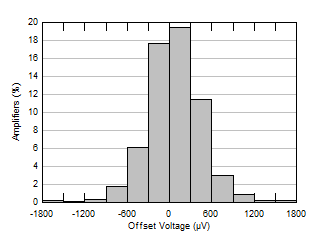 Figure 6-1 Offset Voltage Production Distribution
Figure 6-1 Offset Voltage Production Distribution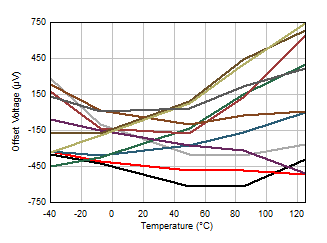 Figure 6-3 Offset Voltage vs Temperature
Figure 6-3 Offset Voltage vs Temperature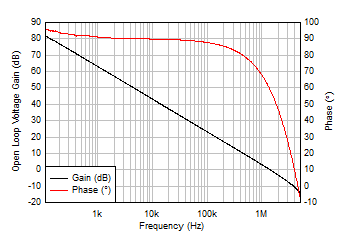 Figure 6-5 Open-Loop Gain and Phase vs Frequency
Figure 6-5 Open-Loop Gain and Phase vs Frequency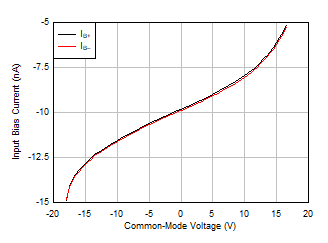 Figure 6-7 Input Bias Current vs Common-Mode Voltage
Figure 6-7 Input Bias Current vs Common-Mode Voltage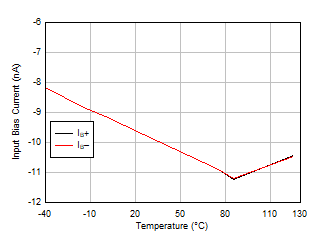 Figure 6-9 Input Bias Current vs Temperature
Figure 6-9 Input Bias Current vs Temperature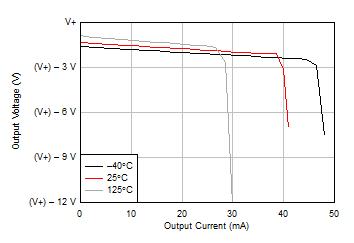 Figure 6-11 Output Voltage Swing vs Output Current (Sourcing)
Figure 6-11 Output Voltage Swing vs Output Current (Sourcing)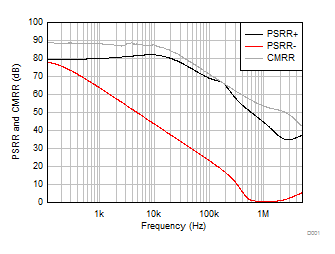 Figure 6-13 CMRR and PSRR vs Frequency
Figure 6-13 CMRR and PSRR vs Frequency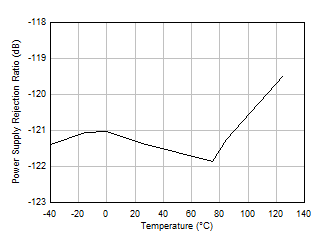 Figure 6-15 Power
Supply Rejection Ratio vs Temperature (dB)
Figure 6-15 Power
Supply Rejection Ratio vs Temperature (dB)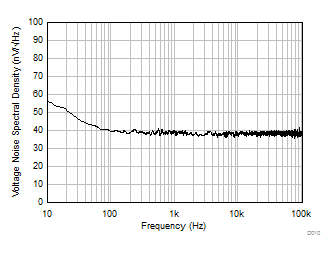 Figure 6-17 Input Voltage Noise Spectral Density vs Frequency
Figure 6-17 Input Voltage Noise Spectral Density vs Frequency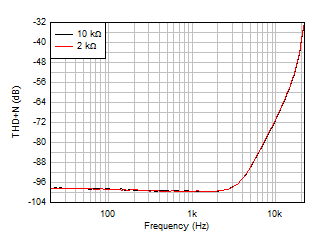
| G = –1, f = 1 kHz, BW = 80
kHz, |
| VOUT = 10
VPP, RL connected to
V– |
| See Figure 7-3 |
Figure 6-19 THD+N
Ratio vs Frequency, G = –1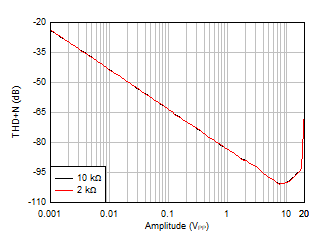
| G = –1, f = 1 kHz, BW = 80
kHz, |
| RL connected to
V– |
| See Figure 7-3 |
Figure 6-21 THD+N
vs Output Amplitude, G = –1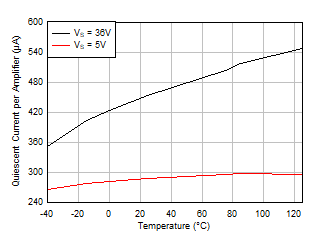 Figure 6-23 Quiescent Current vs Temperature
Figure 6-23 Quiescent Current vs Temperature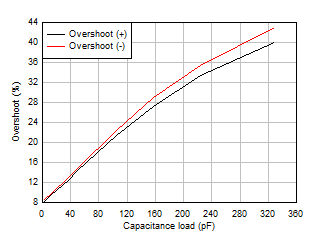
| G = 1, 100-mV output step,
RL = open |
Figure 6-25 Small-Signal Overshoot vs Capacitive Load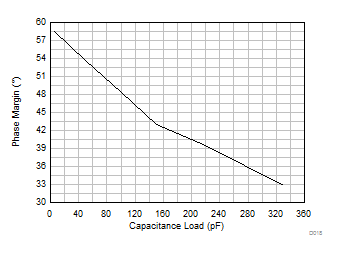 Figure 6-27 Phase
Margin vs Capacitive Load
Figure 6-27 Phase
Margin vs Capacitive Load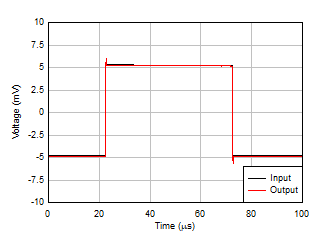 Figure 6-29 Small-Signal Step Response, G = 1
Figure 6-29 Small-Signal Step Response, G = 1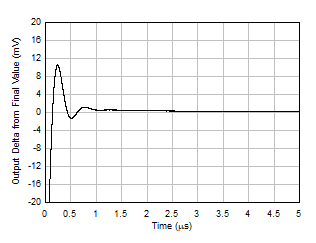 Figure 6-31 Large-Signal Step Response (Rising)
Figure 6-31 Large-Signal Step Response (Rising)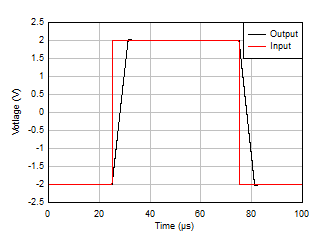 Figure 6-33 Large-Signal Step Response
Figure 6-33 Large-Signal Step Response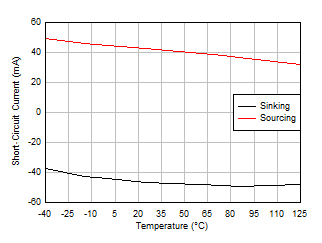 Figure 6-35 Short-Circuit Current vs Temperature
Figure 6-35 Short-Circuit Current vs Temperature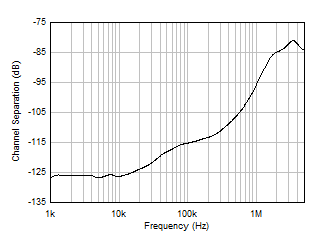 Figure 6-37 Channel Separation vs Frequency
Figure 6-37 Channel Separation vs Frequency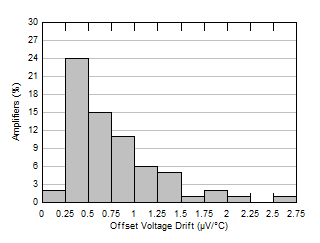 Figure 6-2 Offset Voltage Drift Distribution
Figure 6-2 Offset Voltage Drift Distribution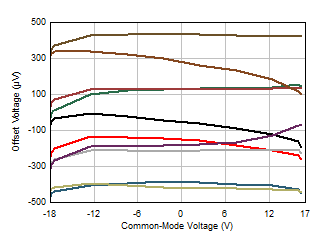 Figure 6-4 Offset Voltage vs Common-Mode Voltage
Figure 6-4 Offset Voltage vs Common-Mode Voltage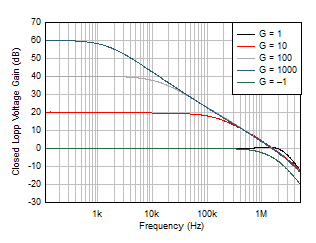 Figure 6-6 Closed-Loop Gain vs Frequency
Figure 6-6 Closed-Loop Gain vs Frequency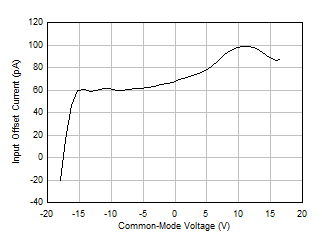 Figure 6-8 Input Offset Current vs Common-Mode Voltage
Figure 6-8 Input Offset Current vs Common-Mode Voltage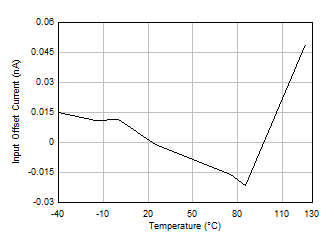 Figure 6-10 Input Offset Current vs Temperature
Figure 6-10 Input Offset Current vs Temperature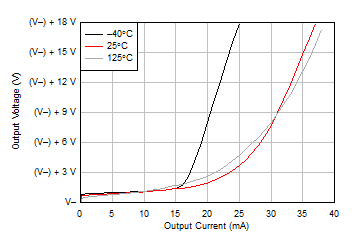 Figure 6-12 Output Voltage Swing vs Output Current (Sinking)
Figure 6-12 Output Voltage Swing vs Output Current (Sinking)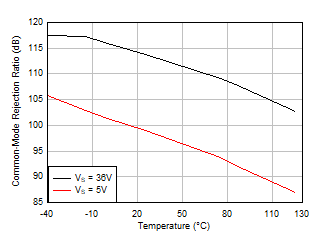 Figure 6-14 Common-Mode Rejection Ratio vs
Figure 6-14 Common-Mode Rejection Ratio vs
Temperature
(dB)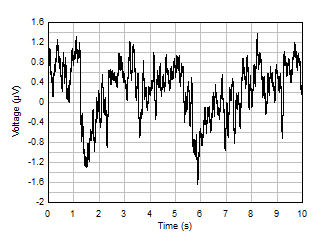 Figure 6-16 0.1-Hz to 10-Hz Noise
Figure 6-16 0.1-Hz to 10-Hz Noise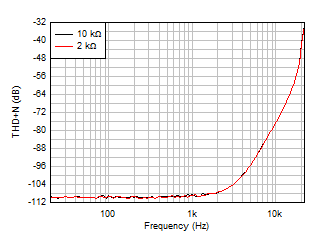
| G = 1, f = 1 kHz, BW = 80
kHz, |
| VOUT = 10
VPP, RL connected to
V– |
Figure 6-18 THD+N
Ratio vs Frequency, G = 1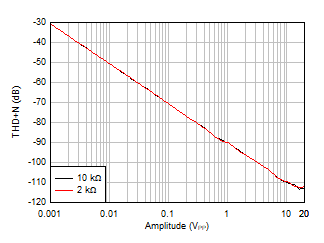
| G = 1, f = 1 kHz, BW = 80
kHz, |
| RL connected to
V– |
| |
Figure 6-20 THD+N
vs Output Amplitude, G = 1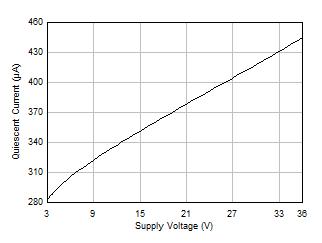 Figure 6-22 Quiescent Current vs Supply Voltage
Figure 6-22 Quiescent Current vs Supply Voltage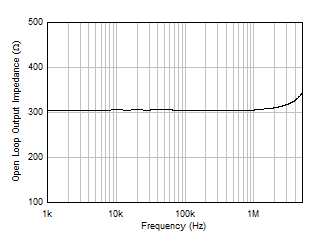 Figure 6-24 Open-Loop Output Impedance vs Frequency
Figure 6-24 Open-Loop Output Impedance vs Frequency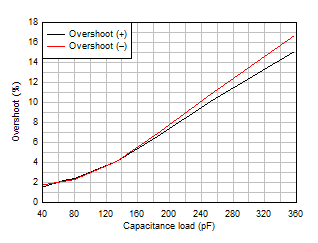
| G = –1, 100-mV output step,
RL = open |
Figure 6-26 Small-Signal Overshoot vs Capacitive Load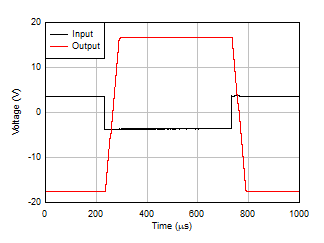 Figure 6-28 Overload Recovery
Figure 6-28 Overload Recovery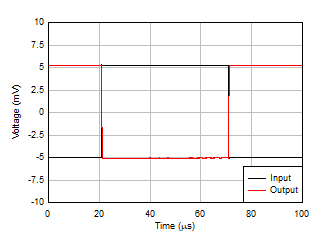 Figure 6-30 Small-Signal Step Response, G = –1
Figure 6-30 Small-Signal Step Response, G = –1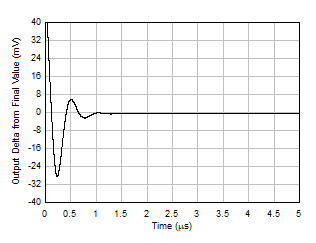 Figure 6-32 Large-Signal Step Response (Falling)
Figure 6-32 Large-Signal Step Response (Falling)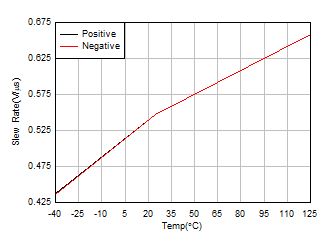 Figure 6-34 Slew
Rate vs Temperature
Figure 6-34 Slew
Rate vs Temperature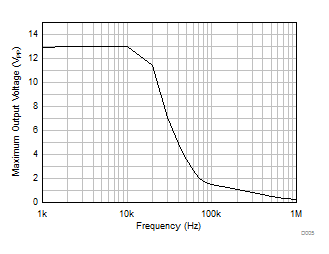 Figure 6-36 Maximum Output Voltage vs Frequency
Figure 6-36 Maximum Output Voltage vs Frequency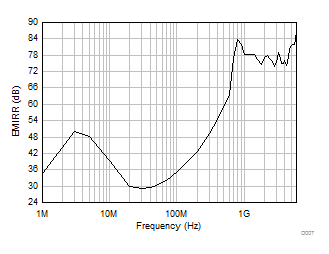 Figure 6-38 EMIRR (Electromagnetic Interference Rejection Ratio) vs Frequency
Figure 6-38 EMIRR (Electromagnetic Interference Rejection Ratio) vs Frequency Figure 6-1 Offset Voltage Production Distribution
Figure 6-1 Offset Voltage Production Distribution Figure 6-3 Offset Voltage vs Temperature
Figure 6-3 Offset Voltage vs Temperature Figure 6-5 Open-Loop Gain and Phase vs Frequency
Figure 6-5 Open-Loop Gain and Phase vs Frequency Figure 6-7 Input Bias Current vs Common-Mode Voltage
Figure 6-7 Input Bias Current vs Common-Mode Voltage Figure 6-9 Input Bias Current vs Temperature
Figure 6-9 Input Bias Current vs Temperature Figure 6-11 Output Voltage Swing vs Output Current (Sourcing)
Figure 6-11 Output Voltage Swing vs Output Current (Sourcing) Figure 6-13 CMRR and PSRR vs Frequency
Figure 6-13 CMRR and PSRR vs Frequency



 Figure 6-23 Quiescent Current vs Temperature
Figure 6-23 Quiescent Current vs Temperature





 Figure 6-37 Channel Separation vs Frequency
Figure 6-37 Channel Separation vs Frequency Figure 6-2 Offset Voltage Drift Distribution
Figure 6-2 Offset Voltage Drift Distribution Figure 6-4 Offset Voltage vs Common-Mode Voltage
Figure 6-4 Offset Voltage vs Common-Mode Voltage Figure 6-6 Closed-Loop Gain vs Frequency
Figure 6-6 Closed-Loop Gain vs Frequency Figure 6-8 Input Offset Current vs Common-Mode Voltage
Figure 6-8 Input Offset Current vs Common-Mode Voltage Figure 6-10 Input Offset Current vs Temperature
Figure 6-10 Input Offset Current vs Temperature Figure 6-12 Output Voltage Swing vs Output Current (Sinking)
Figure 6-12 Output Voltage Swing vs Output Current (Sinking) Figure 6-14 Common-Mode Rejection Ratio vs
Figure 6-14 Common-Mode Rejection Ratio vs 



 Figure 6-24 Open-Loop Output Impedance vs Frequency
Figure 6-24 Open-Loop Output Impedance vs Frequency




 Figure 6-38 EMIRR (Electromagnetic Interference Rejection Ratio) vs Frequency
Figure 6-38 EMIRR (Electromagnetic Interference Rejection Ratio) vs Frequency